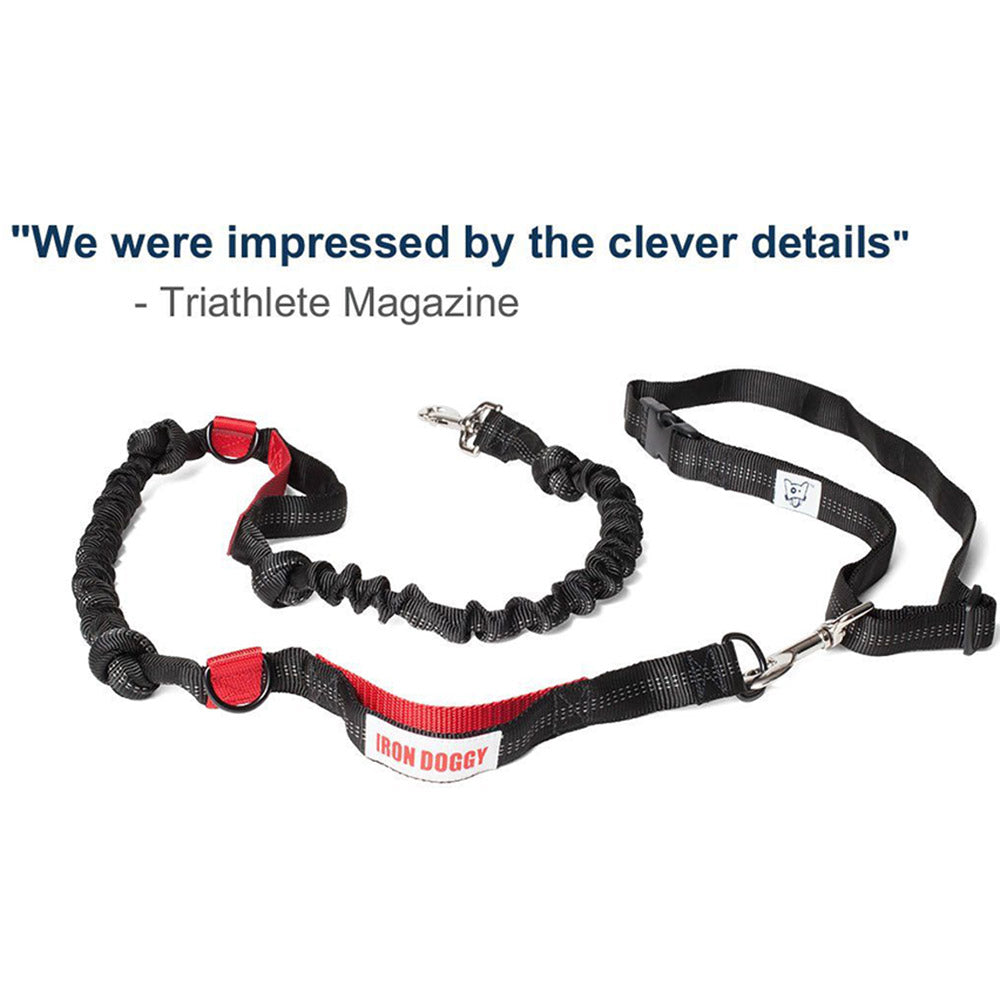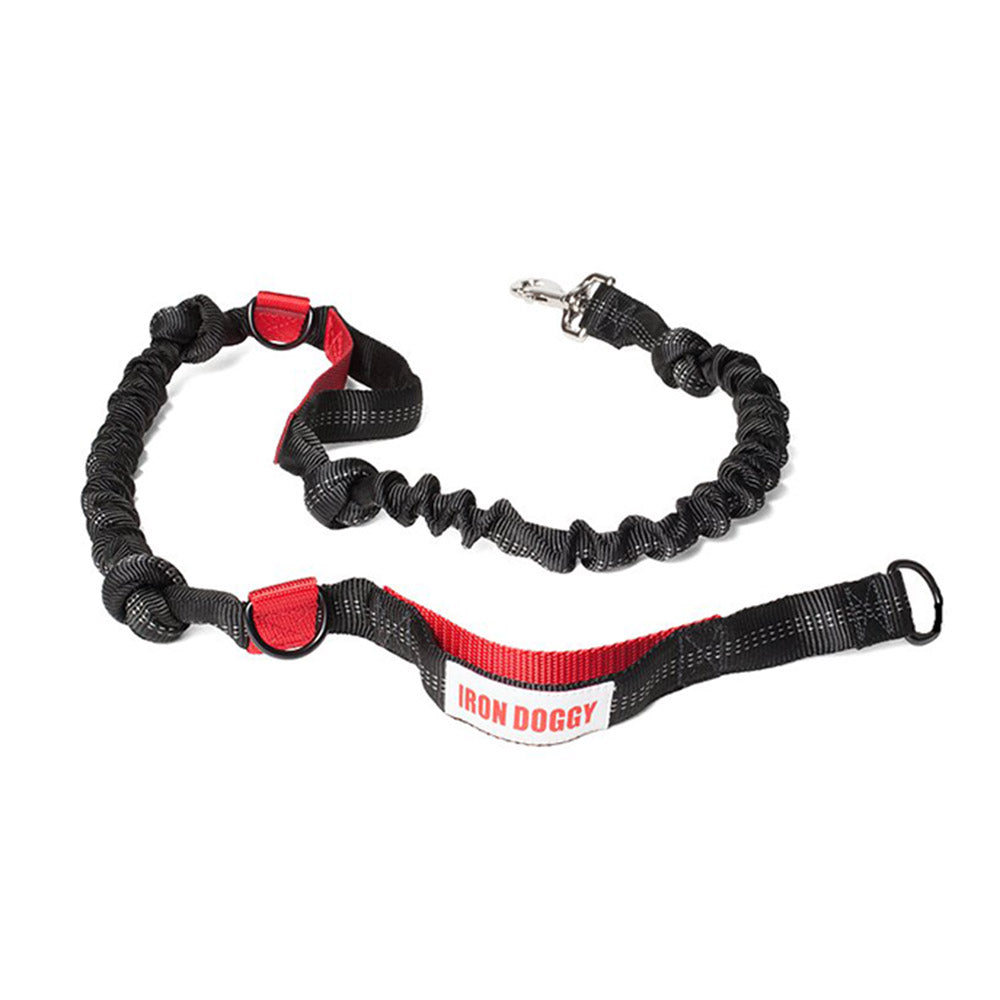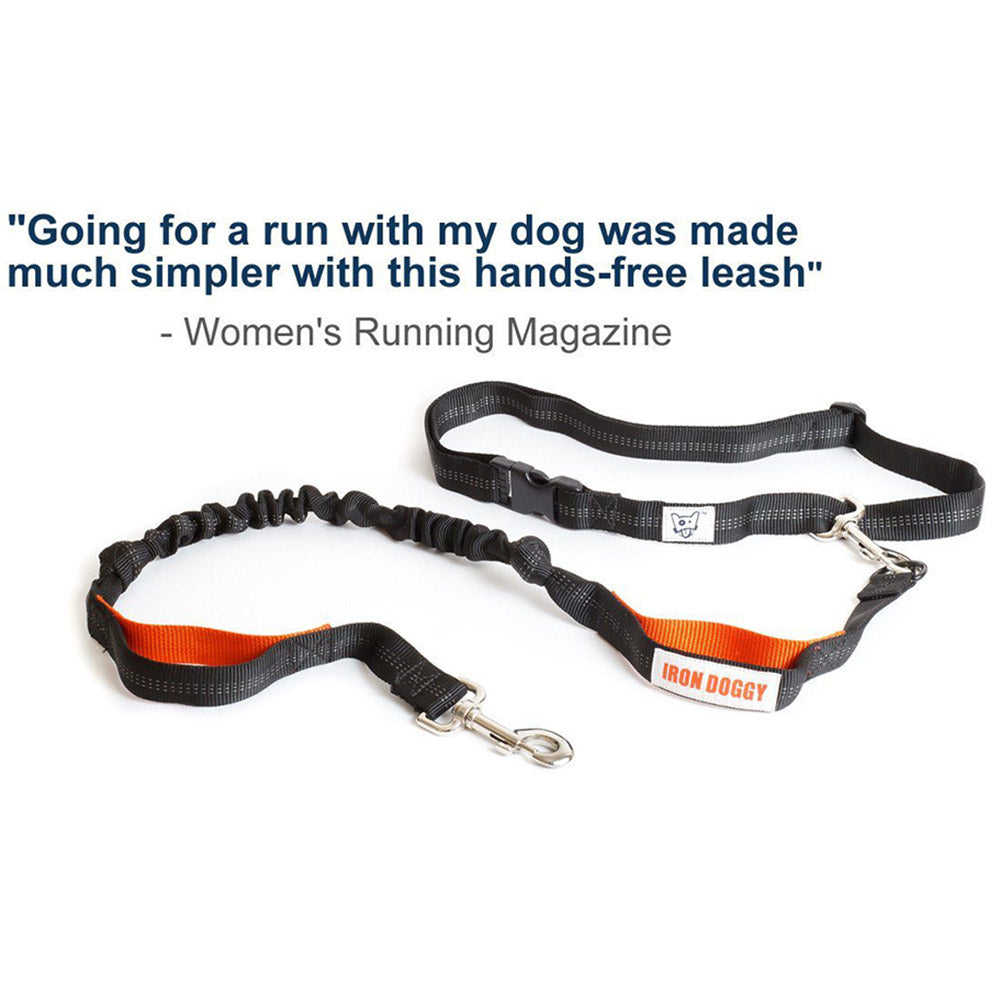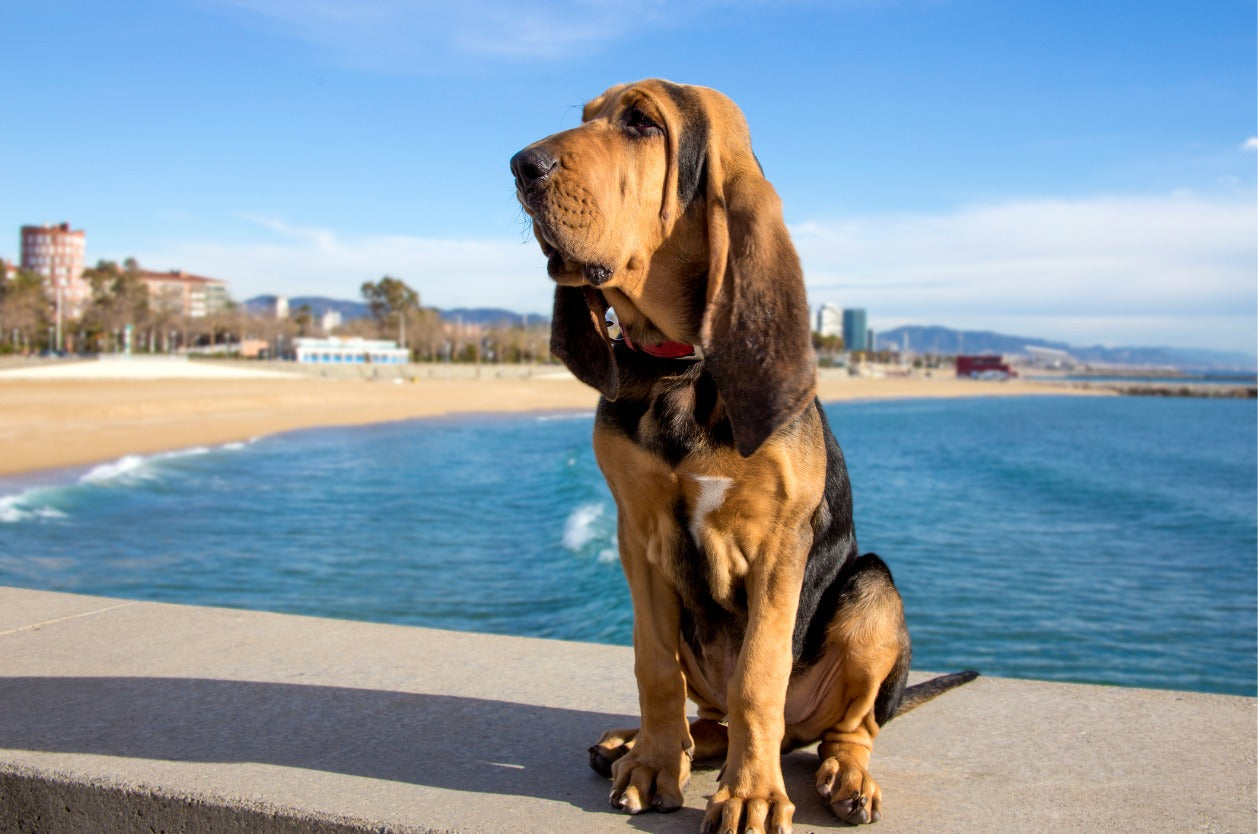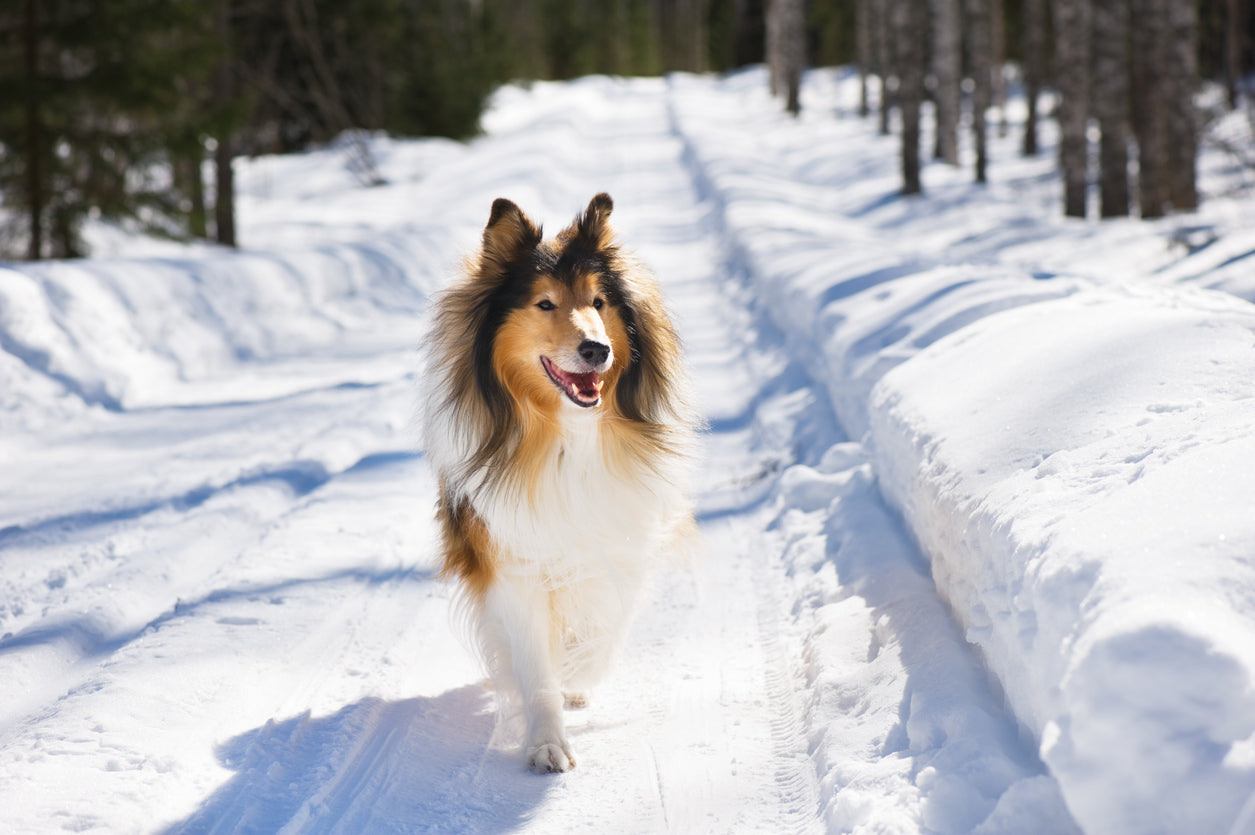
Is your best friend pleading for a run with those irresistible puppy dog eyes or maybe trotting to the door and back repeatedly? A really clever dog might bring you her leash or one of your running shoes to indicate that a run is in order.
She may not care what the weather is outside, but you'll want to make sure she's safe and comfortable on that winter run. That's why you'll need to choose a suitable running surface for both you and your pup.
Safety First!
The best surface for a winter run is non-slippery and comfortable underfoot. If it's non-slippery because it's sprinkled with deicer, either choose a different path or protect your dog's feet with waterproof booties or paw wax. Salt and most other deicers are irritating to your pooch's paws and toxic if ingested. And you know he's going to clean his paws with his tongue once he gets home!
Even if your best friend's paws are protected during your run, it's still a good idea to wash off his feet, legs, and belly after a run (or even a winter walk). He stands a lot closer to the ground than you do, and salty slush splashes in all directions. Why follow up a great run with an emergency trip to the vet when a little extra effort can prevent it? It's your responsibility to keep your dog safe on winter runs.
When choosing doggie boots, look for a brand that comes in a wide range of sizes for the perfect fit. Avoid booties that are either uncomfortably tight or too loose. Good luck getting your dog to wear the former more than once. And the latter can be dangerous to his muscles and joints, especially when conditions might be icy. Adjustable straps will help ensure a proper fit. Bonus points if those straps are reflective for a little extra nighttime safety!
Even if it takes some time and effort for him to get used to wearing them, your pet will stay much warmer with dry feet that are insulated from frosty surfaces.
Speaking of surfaces...
What Surface is Best for a Dog's Run?
With a wide choice of surfaces available, it's important to choose one that won't hurt your dog's feet or cause her to slip. Each of the surfaces listed below has its pros and cons. We've listed them in order by how safe and comfortable they are for a running pooch.
Dirt
Dirt paths are generally soft underfoot and not as likely to be frozen hard and slick as a less porous surface like pavement. However, heavy rain or melting snow can quickly turn one into a muddy morass. Better watch the weather forecast before you and your pup head for your favorite dirt road!
Grass
Given a choice, most dogs will head straight for grass. After all, it's soft, gentle on their feet, and holds onto all kinds of enticing smells. Just be aware that grass can become surprisingly slick when it's coated with a thin film of ice. Fortunately, that thin film usually melts pretty quickly on a sunny day. What's even more surprising is how much traction a thicker layer of snow provides when it's covering that very same grass!
Gravel
Frozen gravel trails can be a bit tough on the paws. However, a snowy gravel road in the mountains that is closed to traffic for the season? Even a little snow will help cushion the stony surface and you won't find a more peaceful place for you and your best bud to enjoy a run together. The scenic possibilities aren't half bad, either.
Artificial Turf
Just like with real grass, the blade fibers that make up artificial turf can freeze and become slippery if they get wet. You should always use caution when walking (let alone running!) on cold, wet artificial turf. If the soil beneath it freezes, the turf will also lose much of its cushiony softness and shock absorbency. This could make for a hard fall if you slip.
Asphalt
Because of its darker color, asphalt tends to be slightly warmer and less icy than concrete. It's also a little softer underfoot. Since asphalt roads are sometimes less busy than other paved roads, you could travel down the middle with your pet. All roads are built to drain to the sides, which means the higher center part tends to stay drier and less icy. Just keep a sharp eye out for traffic if you choose this route!
Any time you and your dog are running on a road, it's a good idea for you both to wear colorful reflective gear. That way, even if you miss seeing an oncoming car, the driver is less likely to miss seeing you.
Concrete Sidewalks
Concrete is a highly porous material that water can generally penetrate easily. If you've ever overfilled an ice tray and ended up with a giant mass of ice rather than individual cubes, you'll understand why ice forms so easily on concrete and tends to remain for so long.
The unique danger with concrete is the prevalence of ice underfoot and a four-legged companion who wants to run on such a wide, flat surface. Your pup is way more stable on his four legs than you are on your two. He could easily cause you to fall unless he's very well leash trained. Using a hands-free runner's leash is a good idea because it leaves both hands free in case you need to break a fall caused by your over-exuberant dog.
Remember, Safety is Key to a Fantastic Run
Your dog might have instigated a jaunt in the snow, but it's your job to keep him safe while you're out on that run.
- Warm-up and cool down properly
- Stay hydrated
- Watch for signs that your dog is chilled and get to a warm, dry place immediately if you see any
- Know the symptoms of frostbite and hypothermia in dogs as well as how to treat them
For more tips about running with your dog in all kinds of weather, visit our Dog Blog. You can also send us a woof with your questions, tips, and suggestions. We're always excited to visit with fellow dog lovers!
🐾

